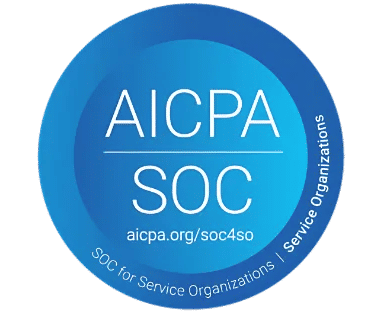Customer Service vs Customer Support | Key Differences Explained
_-RlT0pvIE.webp)
Not all customer help is the same knowing the difference between customer service and customer support can make or break your customer experience.
At first look customer service vs customer support may seem the same. Both help customers and aim to improve their experience. They use similar customer support ticket system and skills to solve problems.
But they handle different tasks within a business.
Customer service handles general help while customer support solves product or tech issues. Knowing the difference helps give better support to customers.
This blog post explains the key difference between customer service and customer support. It also covers how they are similar and why both are important for a great customer experience.
What Is Customer Service?
Customer service involves supporting customers at every step before, during, and after a purchase. It is a broad process that makes customers feel supported at every step. The goal is to answer questions fix problems and build trust with the customer.
Good customer service can be as simple as giving product details or helping someone choose the right option. It can also mean giving updates fixing small issues or checking in after the sale to make sure everything is fine.
When done well customer service does more than solve problems. It creates trust builds loyalty and turns new buyers into repeat customers.
This support plays a key role in improving the full customer journey and helping your business grow.
A fact to consider, Customer-obsessed companies see 41% faster revenue growth compared to those that are not focused on customers.
What Is Customer Support?
Customer support is a specific area within the broader role of customer service. It helps customers when something goes wrong with a product or service. The main goal is to find the problem and fix it fast.
Most support tasks are technical. This includes solving bugs helping with setup or guiding users through product issues. Support teams’ step in when a customer cannot move forward without expert help.
While customer service covers the full journey customer support is about solving product problems. It plays a key role in keeping users happy and products working well.
Key Difference Between Customer Service vs Customer Support
Knowing the main differences between customer service and customer support helps businesses give the right help at the right time and make the customer experience better.
Point of Comparison | Customer Service | Customer Support |
Definition | A broad approach to helping customers across their journey | A specific function that helps fix product or technical issues |
Purpose | To create a positive customer experience and build long-term relationships | To fix problems quickly and make sure the product or service works well |
Nature of Work | Proactive and ongoing throughout the customer journey | Reactive and focused on solving existing issues |
Type of Help Provided | Includes guidance product info order tracking and post-sale follow-up | Involves troubleshooting setup help bug fixing and product issue resolution |
Required Skills | Strong communication patience product knowledge and people skills | Technical knowledge, problem-solving, and troubleshooting skills |
Tools Used | Phone, email, live chat support | Helpdesk software, and ticketing systems. |
Timing of Interaction | Before, during, and after the purchase | Usually after the product is in use and something is not working |
Role in Customer Journey | Helps throughout the customer journey including sales and feedback | Steps in only when users face a problem using the product |
Examples of Tasks | Helping with billing, answering product questions, suggesting best options | Fixing login errors, software bugs, or device connection issues |
Business Impact | Builds loyalty, increases customer retention, improves brand image | Reduces churn, boosts product reliability, and ensures smooth user experience |
Key Similarities Between Customer Service vs Customer Support
Customer service and customer support do different jobs but have the same goal. Both aim to make customers feel satisfied and strengthen their trust in the brand. Knowing how they are alike helps you give better support and meet customer needs in a smart way.
Similarity | Customer Service | Customer Support |
Customer-Focused Approach | Helps customers feel valued throughout the buying journey | Solves product or service issues to keep customers satisfied |
Goal of Customer Satisfaction | Works to create a good experience each time the customer connects with the brand. | Works to fix problems and improve the overall experience |
Use of Communication Channels | Connects through phone, chat, email, or social platforms | Uses the same channels to handle customer issues |
Helps Build Customer Trust | Builds relationships by offering helpful and friendly service | Builds trust by resolving problems clearly and quickly |
Part of the Customer Experience | Plays a key role before and after the sale | Supports users when something goes wrong during product use |
Why Customer Service and Customer Support Are Both Important
Customer service and customer support may seem similar, but both play unique and important roles in shaping the customer experience. When combined, they help businesses meet customer needs, solve problems quickly, and build lasting relationships that lead to growth and loyalty.
1. Helps Create Good Customer Experience
Customer service helps people before during and after a purchase. It includes tasks like answering questions giving guidance and making sure customers feel supported.
Customer support helps when something goes wrong with the product. It solves issues like login problems setup errors or product faults.
When both are used together customers get help at every step. From choosing a product to solving problems after buying everything feels smooth. This full experience builds trust and makes customers feel happy with the brand.
2. Trust and Confidence Grow
Trust is key in any customer relationship. People trust a business when they know help is easy to get and always useful.
Customer service builds trust with quick and helpful answers. Customer support adds confidence by fixing problems and making sure the product works well.
When support is steady and service is clear customers feel safe and respected. This trust makes people stay longer and tell others about the brand.
3. High-Quality Service
According to amplifAI, 45% of customers expect their problems to be resolved on the first contact. People want more than just a good product. They want to feel heard and supported.
If customers get fast answers or quick help with problems, they feel happy with the service.
Customer service helps with common questions and first-time buyers. Customer support handles deeper product issues. Together they improve the full customer experience.
Better service and support lead to good reviews more trust and strong brand loyalty.
4. Ongoing Help Reduces Customer Loss
Customers often leave when they feel ignored. Even a great product can fail without support.
Strong service guides customers and keeps them informed. Good support solves issues without delay.
When both are strong fewer people leave. This lowers loss and saves money for the business.
5. Strong Service and Support Drive Business Growth
Happy customers help a business grow. Good service and strong support lead to more repeat sales and good reviews.
Happy customers often share their good experiences with others. This builds the brand and brings in new people.
Together service and support increase loyalty reduce problems and help the business grow faster.
Key Challenges in Customer Service vs Customer Support
While customer service and customer support have distinct functions, both face common challenges that can impact customer satisfaction and operational efficiency.
1. Managing High Volumes of Customer Queries
During sales or product issues, teams get many questions at once. They receive emails, calls and chats all day. Without proper tools, replies may slow down. Some messages may even get missed. This can make customers unhappy. Tools like ticket management system and auto replies help teams stay on track.
2. Keeping Communication Clear Across Channels
Customers reach out through chat, email, phone and social media. They want the same answer on every platform. But it is hard to manage many channels at once. One delay or mistake can confuse people. A shared system for all channels helps teams reply faster. It also helps keep the message clear and professional.
3. Balancing Speed and Personal Touch
Customers want fast replies. But they also want to feel understood. It is not easy to do both at the same time. Quick replies may sound cold. Long chats may slow down the team. Using tools and customer info can help. Even small personal details can make replies feel warm and helpful.
4. Staying Updated on Product or Service Changes
Products and services change often. New features come in. Old ones may go. Teams must learn about these changes fast. If they do not, they may give wrong answers. This can confuse customers. Ongoing training and updates help the team stay prepared. When the team knows more, they can support customers better.
5. Handling Challenging Customer Interactions
Some customers may feel disappointed or unsure. These interactions can be difficult to manage. Teams need to stay calm and respectful. They should listen carefully and offer clear solutions. Regular training in communication and emotional skills can prepare teams to respond with confidence and care.
Best Practices for Service & Support Teams
Providing good customer service and support builds strong trust and keeps customers loyal. It also supports long-term growth. Whether solving tech problems or answering simple questions, your team should be ready, kind, and quick to help. Here are some best practices to follow.
1. Invest in Ongoing Training
Customer needs keep changing. What worked before may not work now. That’s why regular training is important. Train your team on product details and customer service skills.
Focus on soft skills like listening, empathy, and clear speaking. A well-trained team can fix issues faster. They can also turn a bad moment into a good one.
Training builds confidence. It helps your team feel ready for any situation. It also shows that you care about their growth. This often leads to better work and happier staff.
2. Use the Right Tools and Technology
Speed and accuracy are key in support. The right tools make work easier. Use a support ticket system that tracks tickets and shows customer history. Leverage AI powered Helpdesk system to help with simple questions.
These tools save time. They help your team answer faster and stay organized. Instead of switching between systems, your team can focus on solving problems.
AI can also give smart replies and show help articles. This means your staff handles fewer tasks and gives better service. When your tools work well, your customers notice.
3. Actively Listen to Customer Feedback
Share feedback with your team during team talks or regular updates. Talk about what worked well and what needs to be better. This helps everyone stay informed and improve together. Find common issues that many customers face. Fixing these makes your service stronger.
Even small changes matter. When customers see you listen and improve, they feel valued. This builds trust and keeps them coming back. Feedback is not just data. It helps your team grow and serve better.
When customers see that their feedback brings real changes, they feel respected.
4. Offer Multichannel Support
Today, customers use many ways to contact you. They may write an email, start a live chat, send a message on social media, or make a call. You should be ready on all these platforms.
Recent research by Adobe reveals that businesses with robust omni-channel customer engagement approaches achieve a 10% year-over-year revenue increase, a 10% boost in average purchase value, and a 25% improvement in conversion rates.
Make sure your replies are clear and useful on every channel. This helps your team stay on track and respond quickly.
5. Self-Service Portal
Many customers like solving problems on their own. A self-service portal helps customers find answers anytime. It should be easy to use with clear FAQs, guides and videos. Keep the content updated. Use simple words so all users can understand. A good portal helps customers find what they need without waiting.
This helps in saving time for both customers and internal team. It also improves customer satisfaction because they get quick help, even outside working hours.
How Helpdesk 365 Helps Handle Customer Support
Helpdesk 365 works smoothly with Microsoft tools like Teams, Outlook, and SharePoint, so your team can work in tools they already know. It comes with useful features such as CSAT reports to track customer satisfaction, ticket aging to manage response times, and a self-service portal so customers can find answers on their own.
What makes Helpdesk 365 even more powerful is how it uses AI and automation. It can handle routine tasks, speed up approvals, and reduce manual work. This gives your team more time to focus on customers and solve real problems. Users can also find Helpdesk 365 on Microsoft AppSource.
Conclusion
We have seen the difference between customer service and customer support, and how each plays a vital role in shaping the customer experience. Managing both effectively requires the right tools that support fast responses, clear communication, and smart workflows.
Helpdesk 365 is designed to do just that. Built on the Microsoft ecosystem, it brings powerful features like AI automation, CSAT tracking, and multichannel integration all in one place.
If you’re looking to streamline your support operations and boost team productivity, try Helpdesk 365 today and take your customer experience to the next level.
Frequently Asked Questions
What is the difference between customer service and IT support?
Customer service focuses on assisting customers with general inquiries, account management, and improving their overall experience. IT support, on the other hand, deals specifically with technical issues such as troubleshooting software, hardware, or system-related problems.
Does customer service count as customer support?
Customer service covers all the ways a company interacts with customers to improve their overall experience and build a strong connection. Customer support is a part of this, mainly focused on helping customers solve problems with a product or service.
What is the main goal of customer service?
To keep customers happy, loyal, and satisfied through helpful and friendly interactions.
Who typically handles customer service tasks?
Customer service tasks are usually managed by service representatives, account managers, or front-line staff. These team members interact with customers directly through calls, chats, or emails and help with order issues, general questions, billing, and other non-technical needs.
How can customer support teams be more efficient?
Customer support teams can become more efficient by using automation tools to handle repetitive tasks, setting up clear and simple workflows to manage tickets, and maintaining an updated knowledge base for quick access to solutions.










_svxLrd-8yH.png)

_2VYSFUTN5m.png)

_JiluXJRGNl.svg)

_2djTKNocf.png)





_Rapo0hRMBy.png)


























